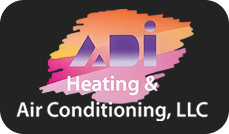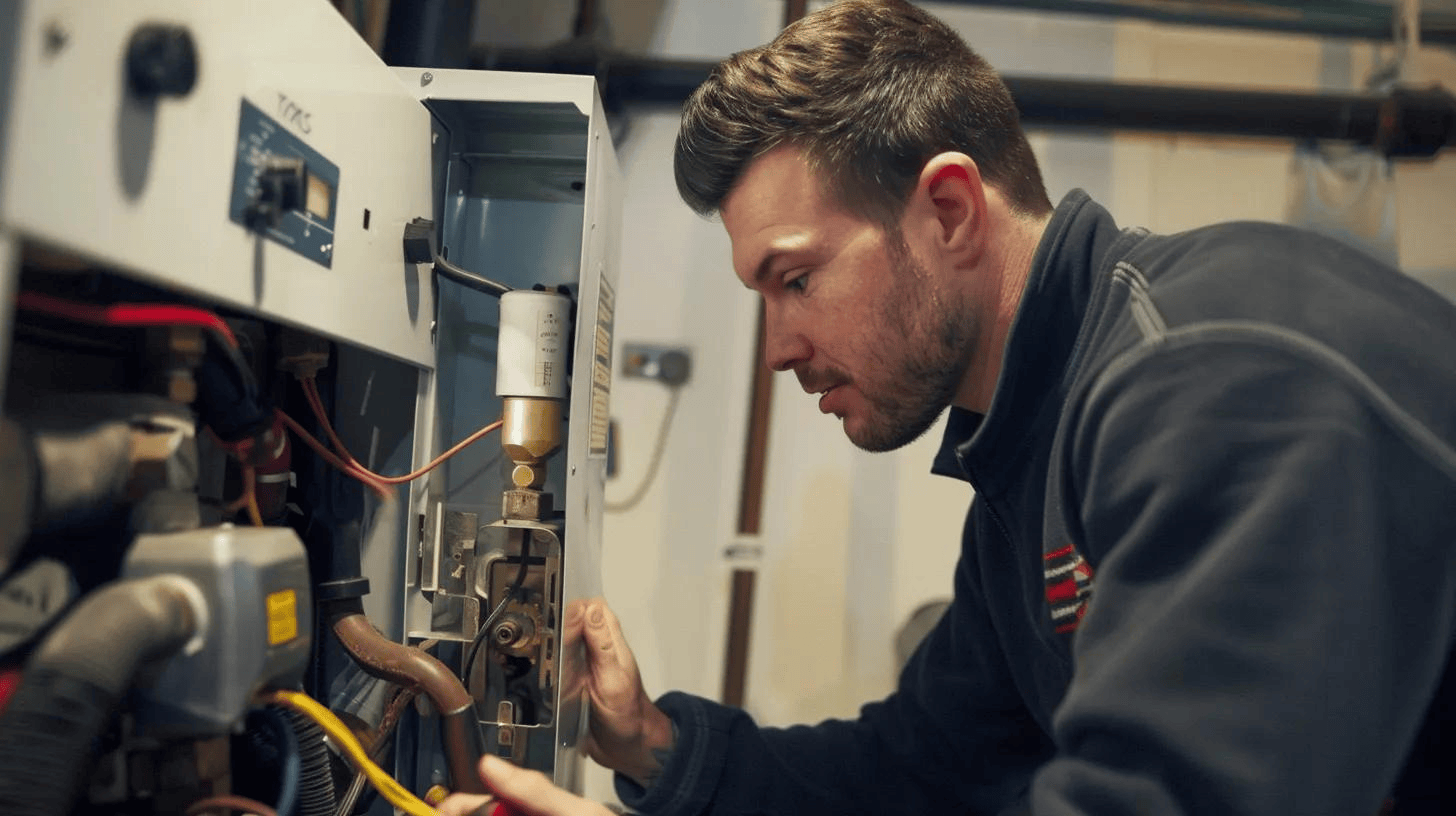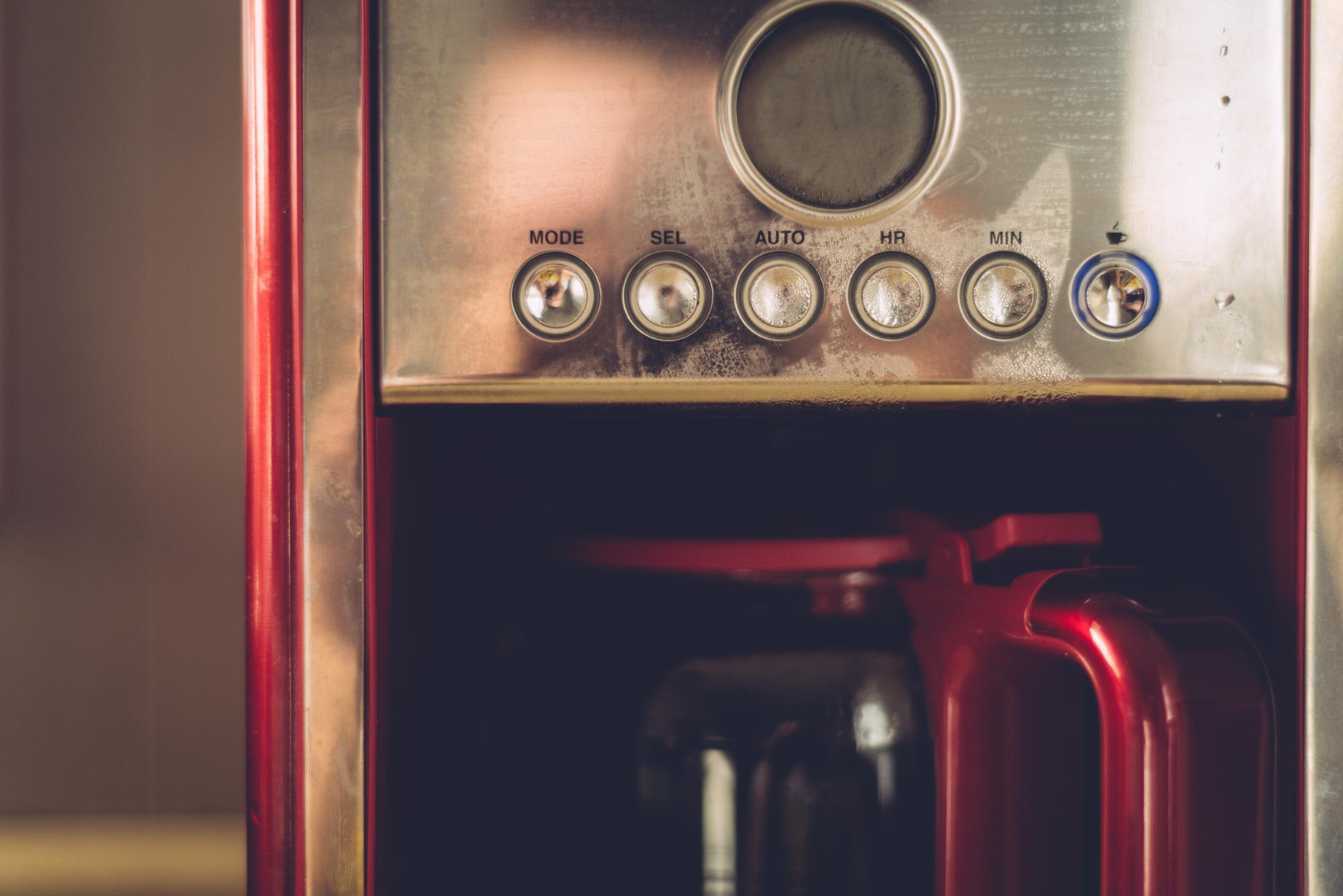Common Heating Issues: How to Fix Your Furnace Problems
Furnace Troubleshooting Guide: How to Diagnose and Fix Common Furnace Issues
A clear, practical furnace troubleshooting guide helps homeowners and small businesses diagnose heating problems quickly and safely while reducing unnecessary emergency calls. This guide explains common furnace symptoms such as no heat, intermittent heating, noisy operation, blowing cold air, and short cycling, and it shows how to map each symptom to likely causes and safe DIY checks. By following stepwise diagnostics and simple fixes, readers can resolve many issues—like dirty furnace filters or thermostat malfunctions—without professional intervention, while recognizing when risks require a technician. The article lays out component-focused diagnostic techniques, step-by-step DIY repairs suitable for household tools, criteria for when to call a professional, and maintenance strategies that prevent future faults. Throughout, target keywords such as furnace not working, furnace problems, furnace short cycling, and furnace maintenance tips are used to aid clear search intent and actionable outcomes. Read on for symptom lists, EAV reference tables, HowTo procedures, and local maintenance context for Montgomery County and the greater Washington D.C. area.
What Are the Most Common Furnace Problems and Their Symptoms?

Common furnace problems present predictable symptoms that point to specific components or system conditions, enabling faster diagnosis. Mechanically, issues arise from airflow restriction, ignition failures, electrical faults, or worn moving parts, each producing characteristic signs such as no heat, loud noises, or cycling behavior. Identifying the symptom first—like uneven heating or a noisy furnace—narrows the probable causes and guides safe DIY checks before escalating to professional service. The following list highlights the top recurring furnace problems and one-line symptom-to-cause mapping to serve as an immediate decision aid for homeowners and small business operators.
The top furnace problems and quick symptom cues are:
- No heat: thermostat settings, power loss, or ignition failure prevent heat production.
- Furnace blowing cold air: ignition or gas supply issues, or short cycling due to safety shutdowns.
- Noisy furnace: banging, squealing, or grinding often indicate blower, belt, or loose panels.
- Short cycling: frequent on/off cycles caused by airflow restriction, oversized unit, or control faults.
- Uneven heating: ductwork imbalance, thermostat location, or zone control problems causing hot/cold spots.
These symptom-to-cause cues form a rapid checklist that helps decide whether a safe DIY step is likely to restore function or whether a trained technician should inspect the system.
Before the detailed subsections below, this EAV-style quick reference maps common problems to likely causes and immediate DIY checks so you can self-diagnose efficiently.
This table shows common furnace problems, likely causes, and short DIY steps to try before calling a professional.
This quick-reference table summarizes which common checks are most likely to reveal the underlying cause and helps prioritize safe actions before escalating.
Why Is My Furnace Not Heating Properly?
A furnace not heating properly usually results from either control, ignition, fuel, or airflow problems and each category produces distinct signs to guide diagnosis. Thermostat misconfiguration or dead batteries commonly present as unresponsive behavior while power issues such as tripped circuit breakers produce a total shutdown. Ignition and gas-supply faults manifest as a failure to light or intermittent firing, and restricted airflow from a dirty furnace filter reduces heat delivery and can cause overheating shutdowns. Start diagnostics by confirming thermostat mode and setpoints, verifying power at the breaker, and visually checking the filter; these steps identify the majority of simple faults. If the ignition system shows repeated failures, or if the unit emits gas odor or abnormal combustion signs, stop and seek professional assessment due to safety concerns.
What Causes Noisy Furnace Operation and How Can I Identify It?
Noisy furnace operation compresses many potential failures into recognizable sound profiles that reveal likely faulty components and urgency levels. Banging on startup often indicates delayed ignition or expanding metal ducts, while persistent squealing or grinding generally signals blower motor bearing wear or a worn belt. Rattling can stem from loose panels, fasteners, or debris in the blower housing, and a high-pitched whine may indicate a failing inducer or blower motor bearing under electrical stress. Conduct a safe auditory and visual inspection with the unit off: tighten accessible panels, note when the noise occurs, and observe airflow and vibration; these checks help determine whether a temporary correction is feasible or whether shutdown and professional service are required.
How Do Pilot Light Issues Affect Furnace Performance?
Pilot light and ignition assembly faults disrupt combustion initiation and produce classic symptoms such as no flame, weak flame, or yellow instead of steady blue flame, indicating incomplete combustion. On older systems a thermocouple failure can allow the pilot to extinguish repeatedly, while modern electronic igniters show fault codes or no spark during the ignition cycle. A stable blue pilot flame signals proper operation; a yellow, irregular, or absent flame warrants careful inspection for dirt, drafts, or component wear. Because pilot and combustion issues directly affect safety and emissions, follow safe relighting protocols only when there is no gas smell and stop to call professional service if ignition fails repeatedly or combustion looks abnormal.
What Are the Signs of a Dirty Air Filter and Its Impact on Heating?
A dirty air filter restricts airflow, reduces heat transfer, raises energy use, and contributes to short cycling and premature component wear, producing symptoms like reduced heat output, rising utility usage, and frequent on/off cycles. Visually a darkened, clogged filter with visible particulate indicates immediate replacement; tactile resistance when air is forced through the filter also confirms blockage. Replacing or upgrading to the correct MERV-rated filter restores airflow balance and reduces blower strain, improving temperature consistency and system lifespan. Monitor filters monthly in high-use seasons and replace according to the manufacturer and household factors—pets, allergies, and heavy use all shorten filter life—so routine checks prevent many common furnace problems.
Why Does My Furnace Keep Short Cycling and How Can I Stop It?
Short cycling—frequent short on/off cycles—reduces efficiency and accelerates wear, and its root causes are often traceable to airflow restriction, thermostat placement, or sizing and control faults. A clogged filter, closed or blocked vents, or dirty blower components restrict airflow and cause the system to overheat and shut down, restarting soon after. Thermostat placement near heat sources or direct sunlight can signal an early satisfied temperature and cause rapid cycling, as can a miscalibrated thermostat, control board faults, or an oversized furnace for the space. Start by replacing the filter, ensuring vents are open, and relocating or recalibrating the thermostat; if cycling continues despite these checks, a professional evaluation is required to assess sizing, control board, or heat exchanger integrity.
How Can I Diagnose Furnace Components to Identify Faults?
Component-level diagnosis yields specific signs that map to failing parts, enabling focused repairs or targeted replacement of the faulty element. Each major furnace component—thermostat, blower motor, heat exchanger, ignition system, and power controls—exhibits characteristic behavior when healthy, and diagnostic observations such as airflow, sounds, visual cues, and error codes help establish the fault. Safe component checks start with low-risk inspections like thermostat power and battery checks, filter condition, and panel tightness, while high-risk checks (heat exchanger inspection, gas-valve testing) should be left to trained technicians.
How Does the Thermostat Control Furnace Operation and What Malfunctions Occur?
The thermostat issues the call for heat and sets cycle timing; a properly functioning thermostat provides stable control signals that start and stop the furnace at setpoints, while malfunctions cause incorrect temperature readings or erratic cycling. Common faults include dead batteries, incorrect mode (heat vs fan), loose wiring, or calibration drift—each producing predictable symptoms like no heat, continuous running, or short cycling. Diagnostic steps include checking batteries, confirming mode and set temperature, cycling power to the thermostat, and verifying that the thermostat display and wiring are intact. If the thermostat is programmable or smart, software or connectivity issues may require a reset or controlled reconfiguration before replacing hardware.
What Role Does the Blower Motor Play and How to Detect Its Issues?
The blower motor provides the forced-air movement that delivers heated air into the duct system; normal behavior is steady, even airflow with minimal vibration, while faults produce weak airflow, unusual noises, or failure to start. Symptoms such as a warm furnace cabinet but no airflow, grinding or squealing noises, or intermittent blower operation point to motor bearing wear, capacitor failure, or debris obstructing the blower wheel. Safe inspections include checking and replacing a dirty filter, ensuring vents are open, and listening to the motor during startup; persistent motor noise or failure to start requires professional service as motor replacement or electrical diagnostics are involved. Proper blower function is essential to avoid overheating and short cycling.
How Can I Inspect the Heat Exchanger for Cracks and Safety Risks?
The heat exchanger separates combustion gases from household air; a cracked exchanger can leak combustion products, including carbon monoxide, into living spaces, making it a safety-critical component that typically requires professional inspection. DIY indicators include soot accumulation, unusual smells, discolored exhaust, and CO alarm activation, but visible inspection is limited and not definitive for detecting hairline cracks. Because of the severe safety implications, homeowners should not perform invasive tests and should instead use symptom-based checks—CO alarm activity, persistent soot, or unexplained health symptoms—as triggers to stop using the furnace and call an expert for certified leak testing. Professional testing detects cracks and quantifies risk for safe repair or replacement.
How Do Circuit Breakers and Power Supply Affect Furnace Function?
Circuit breakers and the furnace's power supply provide the electrical baseline for control board and motor operation; normal function means steady power and no tripping, while electrical faults can lead to complete shutdown, erratic behavior, or dangerous sparking. Basic safe checks include verifying that the furnace switch is on, inspecting the breaker panel for tripped breakers, and resetting a tripped line after ensuring no ongoing fault. If breakers trip repeatedly, or if there are burning smells or visible electrical damage, discontinue attempts to reset and schedule professional electrical and HVAC service because control board failures or wiring faults present fire and safety hazards. Reliable power is essential for ignition, blower control, and safety interlocks.
Frequently Asked Questions
What should I do if my furnace is making strange noises?
If your furnace is producing unusual sounds like banging, squealing, or grinding, it’s essential to identify the source of the noise. Banging may indicate delayed ignition or expanding ducts, while squealing often points to worn blower motor bearings or belts. Start by tightening any loose panels and checking for debris in the blower area. If the noise persists or is accompanied by performance issues, it’s advisable to contact a professional technician for a thorough inspection and necessary repairs.
How can I improve my furnace's energy efficiency?
Improving your furnace's energy efficiency can be achieved through regular maintenance and simple adjustments. Start by replacing or cleaning the air filter every 1-3 months to ensure proper airflow. Additionally, consider scheduling annual professional maintenance to inspect and tune up the system. Sealing any leaks in ductwork and ensuring that vents are unobstructed can also enhance efficiency. Lastly, upgrading to a programmable thermostat allows for better temperature control, reducing energy consumption when the home is unoccupied.
What are the signs that my furnace needs to be replaced?
Several signs indicate that it may be time to replace your furnace. If your unit is over 15 years old and requires frequent repairs, it may be more cost-effective to invest in a new system. Other indicators include inconsistent heating, rising energy bills, and unusual noises. Additionally, if you notice yellow flames or excessive soot, these could signal combustion issues that warrant replacement. Consulting with a professional can provide clarity on whether repair or replacement is the best option.
How can I prevent my furnace from short cycling?
To prevent short cycling, which is when the furnace turns on and off frequently, start by checking and replacing the air filter if it’s dirty, as this can restrict airflow. Ensure that all vents are open and unobstructed. Additionally, consider relocating the thermostat if it’s near heat sources that may cause it to read temperatures inaccurately. If short cycling continues, it may indicate a more serious issue, such as an oversized furnace or a malfunctioning thermostat, which requires professional evaluation.
What maintenance tasks can I perform on my furnace?
Homeowners can perform several maintenance tasks to keep their furnaces running efficiently. Regularly check and replace the air filter every 1-3 months, depending on usage. Inspect the furnace for any visible signs of wear or damage, such as rust or loose panels. Additionally, ensure that all vents are clear of obstructions. You can also clean the blower and lubricate moving parts if accessible. However, for more complex tasks, such as inspecting the heat exchanger, it’s best to call a professional.
Conclusion
Understanding common furnace issues and their symptoms empowers homeowners to tackle many problems confidently and safely. By following the troubleshooting steps outlined in this guide, you can save time and money while ensuring your heating system operates efficiently. For more complex issues or emergencies, don’t hesitate to contact a qualified technician for expert assistance. Explore our comprehensive maintenance services to keep your furnace running smoothly all year round.





.png)

